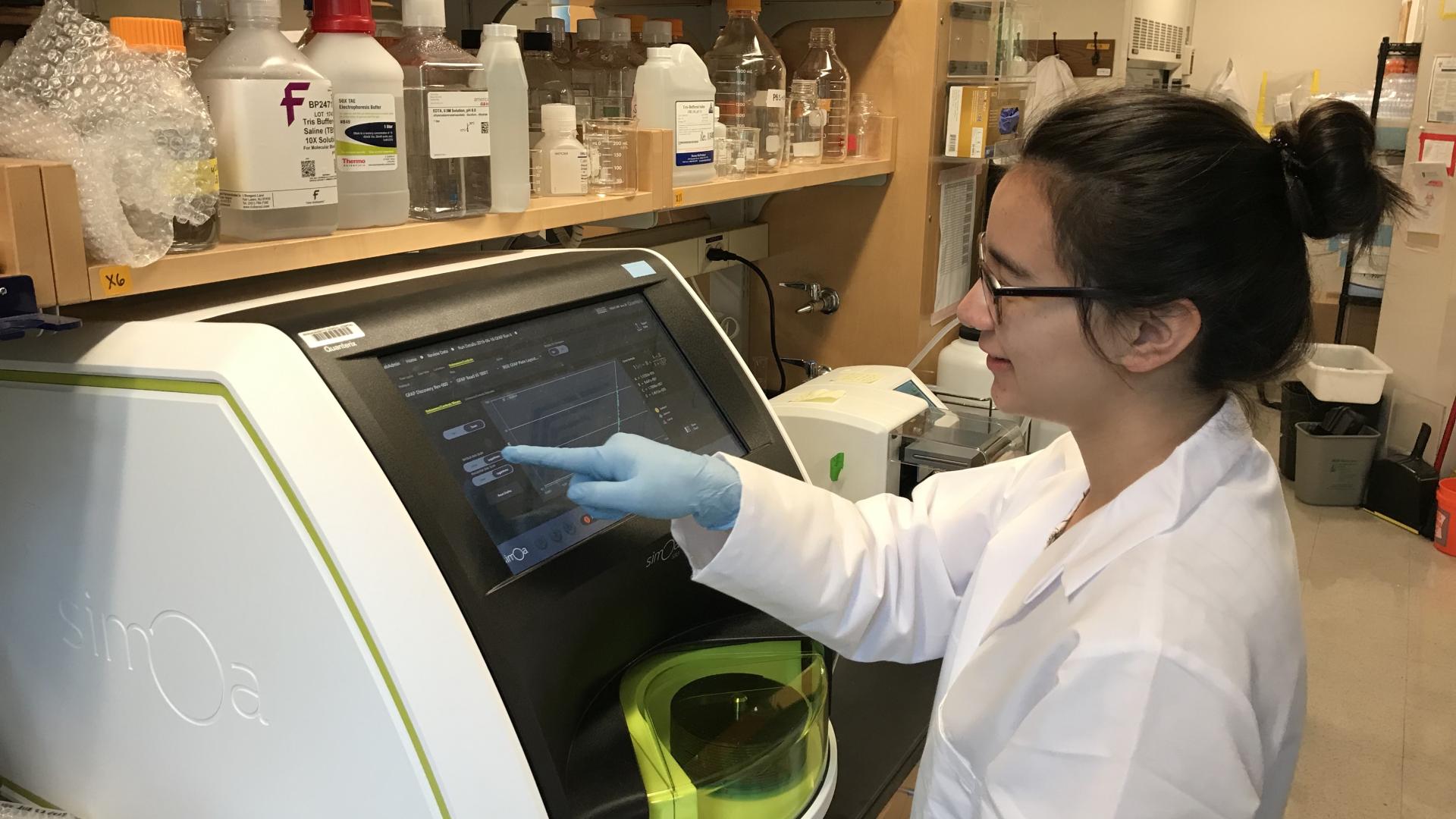Study Find Proteins That May Explain Cognitive Resilience in People with Alzheimer’s Pathology
Written By: BrightFocus Editorial Staff



Written By: BrightFocus Editorial Staff

People with Alzheimer’s pathology, but no significant cognitive decline (termed, resilient), have increases in synaptic signaling and energy production and decreased damage to waste clearance and antioxidant proteins when compared to people with AD-dementia.
What: Researchers identify 123 synaptic proteins that may explain the varying levels of cognitive function in elderly people with and without Alzheimer’s disease (AD) pathology.
Where: Becky C. Carlyle, et al. Synaptic Proteins Associated with Cognitive Performance and Neuropathology in Older Humans Revealed by Multiplexed Fractionated Proteomics, Neurobiology of Aging, 2021.
BrightFocus Connection: This project was supported by the Luminescence foundation in partnership with the BrightFocus Alzheimer’s Disease Research Program grant to first author Becky C. Carlyle, PhD, formerly an instructor in Neurology at Massachusetts General Hospital, now at the University of Oxford. Senior author Steve Arnold, MD, director and principal investigator of the Alzheimer’s Clinical & Translational Research Unit at Mass General, was a 2012-15 ADR grantee.
Why it is Important: Alzheimer’s disease (AD) is known for an abnormal build-up of toxic proteins that is associated with damage and destruction of cells involved in memory and other cognitive abilities. Yet one-third of adults over the age of 65 living outside nursing homes are cognitively resilient — meaning their brain scans show Alzheimer’s pathology, but they show no significant cognitive impairment. On the contrary, some individuals display cognitive impairments with little to no AD pathology and this condition is termed frailty.
Becky C. Carlyle, PhD, of Massachusetts General Hospital, and her team analyzed brain tissue samples from two previous studies enrolling people with varying levels of AD pathology and cognitive function – the Rush Religious Order Study and the Rush Memory and Aging Project. Altogether, they studied hundreds of proteins involved in cell signaling , metabolism, protein degradation, and DNA damage. The researchers recruited 100 people with varying levels of cognitive function and Alzheimer’s pathology.
Their results identified 123 proteins associated with different diagnostic categories and levels of cognitive function. Proteins involved in the release of the brain chemical serotonin were related to cognitive resilience while decreases in cell signaling and cell adhesion were observed in frail subjects. Interestingly, previous studies had found that serotonin reuptake inhibitors prolong serotonin’s effects and preserve cognitive decline. Metabolic pathways also play a significant role in resilience versus frailty. Proteins involved in oxidative phosphorylation; a process used to create cellular energy, were higher in resilient individuals while glucose metabolism was decreased when compared with AD-dementia individuals. Frail individuals showed increased metabolism of carbohydrates, increased accumulation of proteosome components, and increases in DNA repair proteins, indicative of higher DNA damage. Frail subjects had protein expression patterns similar to Dementia-AD while resilient subjects were more similar to normal controls. Because frail subjects display metabolic shifts similar to what is observed in Dementia-AD, age-associated metabolic changes are instrumental for cognitive function even though they may not be directly associated with AD pathology. Moreover, anti-oxidant regulation may play a more prominent role in mechanisms of resilience as depleted levels of the antioxidant, glutathione is associated with AD while less glutathione metabolism is observed in resilient individuals.
Dr. Carlyle and her team suggest that the newly identified proteins in the study could serve as novel biomarkers that help in measuring people’s risk for Alzheimer’s disease. Additionally, the dysregulated proteins seen in frail individuals could potentially serve as new targets for Alzheimer’s therapies ahead.
BrightFocus Foundation is a premier global nonprofit funder of research to defeat Alzheimer’s, macular degeneration, and glaucoma. Through its flagship research programs — Alzheimer’s Disease Research, Macular Degeneration Research, and National Glaucoma Research— the Foundation has awarded nearly $300 million in groundbreaking research funding over the past 51 years and shares the latest research findings, expert information, and resources to empower the millions impacted by these devastating diseases. Learn more at brightfocus.org.
Disclaimer: The information provided here is a public service of BrightFocus Foundation and is not intended to constitute medical advice. Please consult your physician for personalized medical, dietary, and/or exercise advice. Any medications or supplements should only be taken under medical supervision. BrightFocus Foundation does not endorse any medical products or therapies.

University of Oxford

University of Pennsylvania
